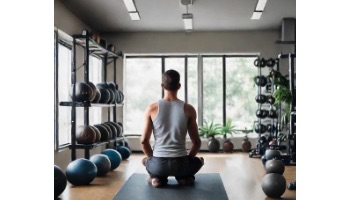 Question: I found an article that said that the leg press machine is one of the worst exercises you can do. Then I found one that says leg presses are good and even safest, when done right. What’s the deal?
Question: I found an article that said that the leg press machine is one of the worst exercises you can do. Then I found one that says leg presses are good and even safest, when done right. What’s the deal?
Answer: You’ve waded into a debate that many a strength trainer has engaged in! Probably as recently as a year ago I would have agreed with the article that says that leg presses should be avoided like the plague because, generally speaking, I think that machines are inferior to free weights. That being said, these days I have discovered so much evidence about the importance of strength when it comes to pain reduction, injury prevention, longevity, mobility—you name it—that I am much more willing to entertain the leg press as an option. Wait a minute now, you’re saying to yourself, you didn’t answer my question! Is leg press safe or isn’t it?
So let’s break this down real quick. First, why are some people very anti-leg press? In a nutshell, the biggest downside to leg press—and really exercise machines in general—is that the machine puts you in a fixed position and dictates a rigid path of movement that your body has to follow. Common belief is that this is safer, but in reality that’s not necessarily the case. If your body is lacking certain strength, flexibility, or mobility the machine might end up forcing you into a bad position. With the leg press, this is most concerning in the down phase of the movement, when your legs are closest to your chest. Without proper hip mobility and core control, the pelvis will tend to tuck under which puts pressure on the lower back. Having a heavy load repeatedly force you into that position is, simply put, not good.
That being said, we all know machines aren’t the only thing that can hurt you. Free weight movements that are done poorly can also lead to injury. So really, when you get right down to it, the key is that if you are going to do leg press you need to do it properly with an eye on form. That’s true of a lot of exercises, of course, which is why I wouldn’t say you can just brush of the leg press as something to never use. It can be done properly, in which case it might be a useful tool, especially for building and maintaining strength in people for whom learning or performing big lifts like squats or deadlifts isn’t really an option. (No access to a trainer, physical limitations, lack of equipment, etc.)
That last bit about building and maintaining strength, by the way, is no small matter. In fact, it’s even where the story becomes something of a catch-22. You see, for quite some time now we have been learning more and more about the mysterious nature of musculoskeletal pain. The more we look, the more we realize that symptoms don’t correlate very well with actual, diagnosable injuries. Five different people with the same bulging or herniated disc, for example, may experience pain from mild, to medium, to excruciating, to none at all! That’s why we’re so bad at treating low back pain. We don’t understand why it hurts, so we can’t understand how to fix it. BUT, guess what seems to consistently help. If you guessed strength, you’re right. Being stronger reduces the chances for injury and reduces musculoskeletal pain. That’s one reason why adding strength is so critical and why I would say if the leg press is the only way you’re going to do that, I wouldn’t tell someone to stop.
So where does that leave us? As I always, it depends. I personally don’t favor the leg press, but I can’t categorically denounce it either. For some people, it’s going to be the next best way to add a little strength to their life. If you were hoping for a more black and white answer, I’m sorry to disappoint. As a consolation for you though, if you are going to use the leg press there is one simple tip I can recommend that might help make it a little safer: try doing the press with only one leg. By keeping one leg down while the other is pressing, the pelvis is ‘locked’ into position, which should reduce the tendency to round your lower back. Just be careful about where the down leg is. Make sure you can’t get it pinched anywhere in the moving parts of the machine. Ask a professional at your gym to show you how to do the one legged option safely, and then give it a go.


